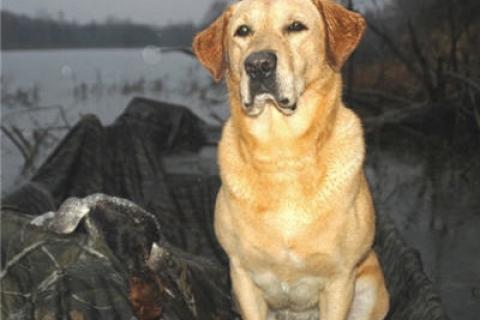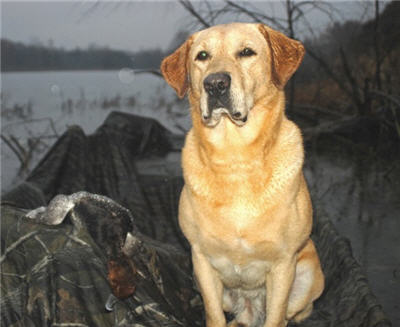
You’ve invested hundreds of hours on dog training to perfect its performance. However, for your hunting dog to perform at its highest level, you need to feed it a high-caliber, high-nutrition diet. Look for the following.
 |
| With over 80 brands of dry dog food on the market, it’s hard to know what to feed this hardworking gun dog. Read the label carefully and make an investment in a food choice that provides high levels of protein and fat. |
Fulfill the Formula
Quality gun dogs are the sum of good genetics, training and nutrition. If any one of these elements is absent from the formula, a dog’s performance will be diminished. Nutrition is the most commonly neglected, yet is the most easily fixed of the three. For peak performance, avoid feeding your best friend bargain basement foods.
Feed the Best
Good nutrition is critical to a dog’s daily life and performance, as well as its overall health and longevity. The food you choose for your gun dog should emphasize high-fat content and low-fiber for best performance.
Make the Right Food Choice
With over 80 brands of dry dog food on the market, choosing the right one for your dog is no easy task. Many factors must be taken into consideration, including the dog’s age, size, physical condition and health issues.
- Strenuous exercise has a profound impact on the amount of energy required to maintain body condition. What works for a springer spaniel may not work for a Labrador retriever. The devil is in the details, such as balancing a dog’s physical needs and caloric requirements with the energy provided by three primary dietary sources: fat, protein and carbohydrates.
- Dry dog foods are used by most owners of active working dogs. Most of the best maintenance-level foods contain 20-27 percent protein, 12-18 percent fat (high performance foods are higher in both categories) suitable carbohydrates, low moisture content and highly useable calories per pound of food.
Read the Labels
Dog food labels contain the nutritional information necessary for making the correct choices for your dog. There are three categories of dry foods: super premium, premium and nonpremium, based on distinguishing characteristics such as cost, nutrient quality and density, palatability and digestibility. The label details will allow you to compare one brand to another. What you are not told is the type and quality of the levels of protein, fat and carbohydrates. Some animal by-products are useable by dogs, while others are nondigestible, such as feathers, beaks and feet. Look for foods that list the protein source as striated muscle or flesh. Foods using the nondigestible products could still list protein at a higher level. So read labels carefully.
Buy the Best You Can Afford
In a nutshell, you get what you pay for. Top end brands cost more initially per serving, but if fed appropriately, they pay for themselves in the long run with less consumption to gain the same, or higher, nutrient levels.
Your food choice for your dog typically should contain 27 to 35 percent protein and at least 20 percent fat. A high fat diet trains a dog’s metabolism to more efficiently mobilize fat as an energy source and provides greater energy output than does a reliance on carbohydrates. This fat-burning strategy conserves for periods when intense effort is essential, such as a day afield pheasant hunting.
Shop for all your hunting dog training needs, including treats and supplements at Bass Pro Shops.
- 6015 views

